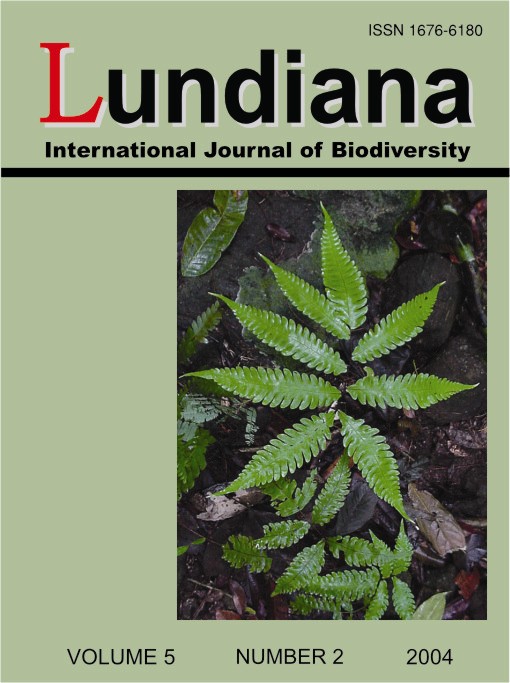Hummingbirds and their floral resources in a forest fragment in Viçosa, southeastern Brazil
DOI:
https://doi.org/10.35699/2675-5327.2004.22014Keywords:
Acanthaceae, Atlantic Rain Forest, ornitophily, floral resources, TrochilidaeAbstract
Between August 1998 and August 1999, hummingbirds and plant species used by an them as nectar sources were recorded in the Mata do Paraíso forest reserve. This area is a regeneration of Atlantic Forest with an area of 194.36 ha. It is located in the municipality of Viçosa, in the Forest Zone of Minas Gerais. Fourteen plant species were visited by the hummingbirds as floral resources, 11 of them ornitophilous and three entomophilous. Most of the plant species occures in the understore or in the forest edges, presenting herbaceous or creeper habitus and bloom in during the rainy season. During the dry season, Geissomeria schottiana and Ruellia brevifolia seemed to be the main nectar sources for the hummingbirds. In five ornitophilous species of Acanthaceae, we recorded six of the eight hummingbird species, confirming the importance of this family for the maintenance of hummingbirds in the reserve. Phaethornis ruber was the most common hummingbird observed (it visited flowers of 10 species), followed by P. squalidus (nine species) and Thalurania glaucopis (four species). Males of T. glaucopis displayed territorial behavior when visiting flowers of G. schottiana and Mendoncia velloziana.
Downloads
Downloads
Published
How to Cite
Issue
Section
License

This work is licensed under a Creative Commons Attribution-NonCommercial 4.0 International License.

